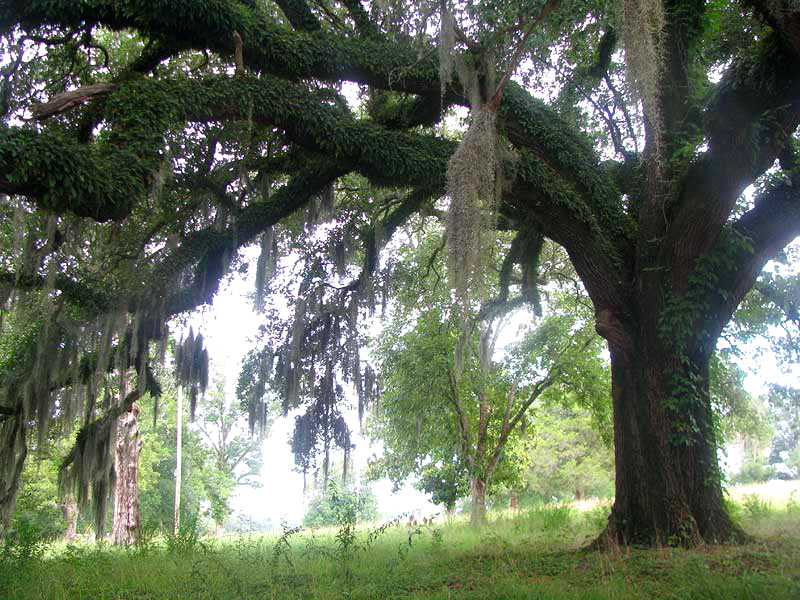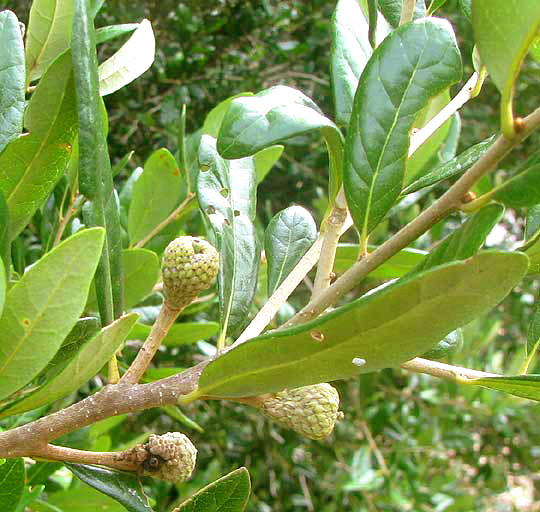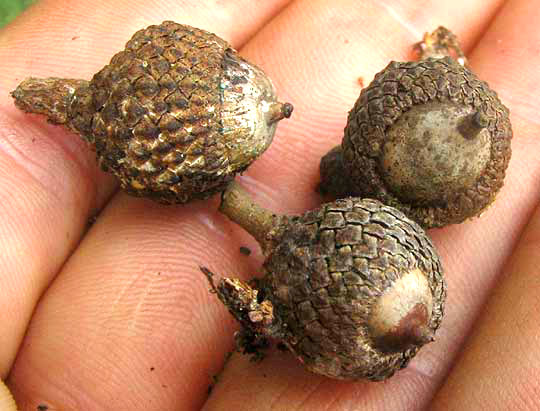Excerpts from Jim Conrad's
Naturalist Newsletter

from the July 22, 2012 Newsletter issued from the woods of the Loess Hill Region a few miles east of Natchez, Mississippi, USA
LIVE OAK
Lately we've been looking at our local oaks, finding that sometimes distinguishing the look-alike species can be challenging. This time we have an oak whose general form is so distinctive that mature trees easily can be identified to species level from a distance. It's the Live Oak, QUERCUS VIRGINIANA. You can see one with its widely spreading, massive lower branches heavily festooned with Spanish Moss above.
That moody, early-morning picture with a bit of mist still on the land is taken at an abandoned homestead near here. That's relevant information because I'm unsure whether our corner of southwestern Mississippi is within the Live Oak's natural distribution area. The USDA's classic Silvics of North America shows the species in Mississippi restricted to the coastal counties south of us, but the online Flora of North America shows us on the northern limit of its distribution. Though Live Oaks are common here, I've not seen any that probably wasn't planted, or near planted trees.
The Live Oak's leathery, evergreen leaves and acorns also are characteristic, as shown below:

The immature acorns in that photo grow on unusually long stems, or penduncles, and the nut's cup is particularly deep. Some mature ones picked up beneath the above tree are shown below:

Pictures of Live Oak acorns on the Internet show nuts emerging farther from their cups.
In the old days Live Oak was an important timber tree, producing very heavy, strong wood. Today it's regarded as growing too slowly to be encouraged as a timber tree. Something that used to be important about Live Oaks for indigenous Americans was that Live Oak seedlings develop large, starchy, underground tubers that in the past were gathered, sliced, and fried like potatoes for food. The Houma people of Louisiana used the Live Oak medicinally for healing dysentery.